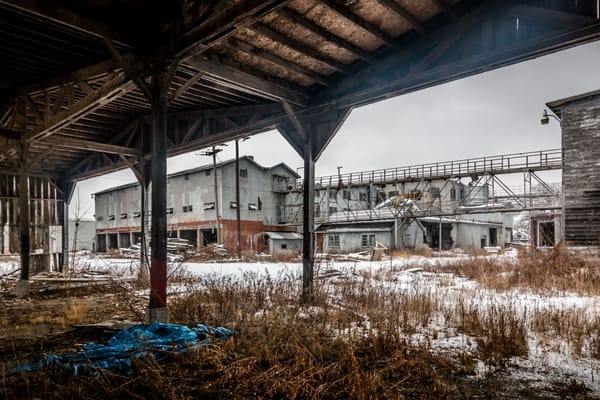In its early days, the Republican Party pursued a politics of national development that included support for tariffs. But by the 1970s, conservative ideologues had come to advocate market solutions for just about everything. Some of those solutions made sense. But other policies have proved disastrous. Free trade and financialization have led to the breakdown of the middle class, the hollowing out of the American interior, and an epidemic of deaths of despair. To reverse these trends, Republicans must challenge free-market orthodoxy.
In the 1990s, Republicans, with the support of libertarian economists, led the charge against the Glass-Steagall laws enacted after the Great Depression. The Financial Services Modernization Act of 1999, which repealed Glass-Steagall, was signed by a Democratic president, Bill Clinton. But the ideas behind it were incubated on the right. It allowed commercial banks to own investment banks and insurance companies and to engage in proprietary trading. It was supposed to let banks grow big enough to be competitive with the large foreign banks.
It may have sounded good at the time. But repealing Glass-Steagall led to a massive consolidation in banking, creating systemic financial risk, as banks became “too big to fail.” Banks could privatize their profits and socialize their losses; after all, Wells Fargo or Citibank or Chase could take the nonfinancial economy down with them if they weren’t permitted to unload their losses on the Federal Reserve.
From the 1980s until 2016, Republicans sought to make US companies “more competitive with foreign companies.” The problem was that it was never possible to drive wages low enough to compete with Chinese labor. By the 1990s, Democrats had largely conceded the point. In time, through the labors of Treasury secretaries like Robert Rubin under Clinton and Larry Summers under Obama, the Democratic Party became the party of Wall Street, financialization, and deindustrialization. It reaped the political rewards of policies Republicans had been the first to champion.
This was part of a broader transformation of the Democratic Party. Once seen as the party of the common man, it is now the party of the coasts, the big cities, the very wealthy, the large corporate interests including Big Tech, the professional managerial class, and those who aspire to it, along with those who are dependent on government assistance and recent immigrants. In short, it is the party of the uncommon man, of those who depart in some way from what is taken to be an (often despised or resented) American norm.
The core constituency of the Republican Party has also changed. It is increasingly the party of interior America and the wage-earning middle and working classes. People who had been “neglected, ignored, and abandoned,” in the candidate’s words, elected Donald Trump in 2016 because he promised to bring back manufacturing jobs, start a massive national infrastructure program, raise wages, and protect their interests. Not since 1956, when Dwight Eisenhower ran on raising the minimum wage and expanding Social Security and unemployment insurance, had a Republican presidential candidate talked about the desirability of rising wages.
Because of these transformations, American politics is defined by new fault lines. The two parties tend to represent the interests of either the super-wealthy or the managerial class who run the nation’s sensemaking and status-granting institutions and staff the upper levels of the federal bureaucracy. There is friction between those two groups over how wealth, power, and status are distributed. Their clashes can frequently capture public attention, as seen in events like Elon Musk’s attempt to remake Twitter.
But there is a more important divide in America, one between those who have captured a disproportionate share of wealth, power, and status—and everyone else. This divide has been described in various ways, though a good shorthand for the conflict is the one coined by Angelo Codevilla, who described it as the ruling class versus the country class. This distinction avoids both ideological and party labels, which would miss important aspects of the structural tensions that act as political stressors and are sublimated into party politics. The tension between the ruling class and the country class is profound, but often obscured by ruling-class factional conflicts, for which the country class is dragooned into action as unwitting foot soldiers who lose, no matter which faction wins.
“The Republican Party must unabashedly champion the interests of the country class.”
No party will ever perfectly represent the country class on the one hand or the ruling class on the other. The Republican Party is in fact backed by numerous billionaires. But it has less fundraising prowess than today’s Democratic Party, a fact reflecting its newly downscale electorate.
To succeed, the Republican Party must unabashedly champion the interests of the country class. This will mean limiting the power of the super-rich, and making prosperity easier to achieve for other Americans. Doing this will require a break with the party’s recent history. It will mean, at a minimum, a rejection of free-market conceits. But it will also involve an embrace of an older, and sounder, school of Republican economics—one that began with Lincoln and has a proud history of promoting American prosperity.
